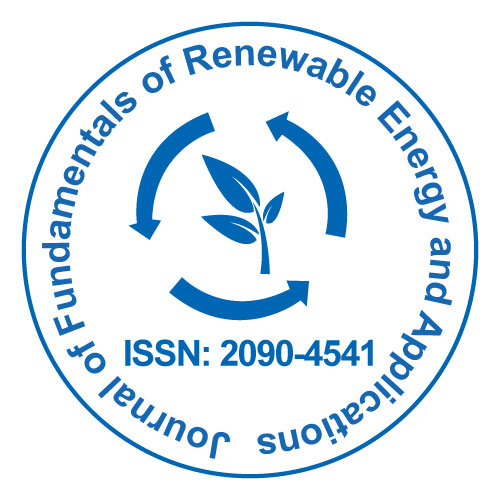
Journal of Fundamentals of Renewable Energy and Applications
Open Access
ISSN: 2090-4541
+44 1300 500008

ISSN: 2090-4541
+44 1300 500008
Commentary Article - (2022)Volume 12, Issue 3
The progress of lignocellulosic biofuels and biochemical industries is dependent on a cost-effective and consistent supply of biomass that meets conversion quality standards. However, historically, research and development have focused on the utilization of lignocellulosic biomass resources without taking into account their wide range of physical and chemical properties, as well as potential supply risks in terms of availability and affordability.
This study investigated strategies for improving biomass quality and consistency along the supply chain through preprocessing operations such as blending, sorting, leaching, drying, and other quality-management approaches for the development of “conversion-ready” lignocellulosic feed stocks for the production of biofuels and bio-products. A conversion-ready feedstock is a feedstock resource with industrial-scale chemical and physical properties that meet the design specifications of bio-refinery handling and conversion systems.
Variability has proven to be a formidable challenge for integrated bio-refineries, impeding continuous operation and lowering product yields required for scale-up production of lignocellulosic biofuels and chemicals. Simple or minimalistic biomass supply systems (hereafter referred to as “conventional”) that deliver field-run biomass to the bio refinery while minimizing operating costs do not ensure that biomass resources meet feedstock quality requirements on a consistent basis. The preprocessing capabilities required to produce feed stocks with consistent physical and chemical properties that are compatible with conversion processes are lacking in traditional supply systems. Furthermore, conventional systems’ utility has been limited to high-yielding regions such as the United States Corn Belt.
The unique challenges of bulk-solids behaviour in particulate systems and the cohesive nature of compressible, elastic biomass solids complicate direct coupling of conventional biomass supply systems with sophisticated conversion processes. Due to the variable physicochemical properties of biomass, recent reports indicate that the operability of bio-refining processes and process models remains less than 50%.
The variability inherent in biomass cannot be managed solely by passive supply systems as the bio-economy grows. The cost of failing to design feedstock supply systems that can manage variations must be balanced with recognition and understanding of the magnitude of biomass variability and uncertainty. Preprocessing strategies are designed to create stable, cost-effective, and quality- controlled biomass supply systems.
Blending and densification strategies, for example, have shown promise in diversifying biomass resources to enable supply-chain resilience for the development of consistent, high-quality feed stocks and the transition to advanced feedstock-supply systems.
The importance of feedstock quality on overall processing efficiency and cost has long been recognized; however, cost- effective solutions to the variety of challenges presented by the biomass-to-feedstock operation have been slow to emerge.
Recent work in government and academic laboratories, as well as industrial facilities, has identified more problematic areas and provided guidance for innovation to address many of those long- standing issues.
As solutions to biomass variability issues are implemented, the environmental and economic consequences become a source of concern. The collection discusses research on more sustainable bio-refining facilities and the production of conversion-ready feed stocks from recyclables. Other papers discuss how to use recycled materials as biomass feed stocks and the viability of recycling materials that have already been used in preprocessing.
Citation: Rubin P (2022) Preprocessing and Conversion of B iomass into Renewable Fuels. J Fundam Renewable Energy Appl. 12:297.
Received: 03-Aug-2022, Manuscript No. JFRA-22-19720; Editor assigned: 05-Aug-2022, Pre QC No. JFRA-22-19720 (PQ); Reviewed: 19-Aug-2022, QC No. JFRA-22-19720; Revised: 26-Aug-2022, Manuscript No. JFRA-22-19720(R); Published: 02-Sep-2022 , DOI: 10.35248/2090-4541.22.12.297
Copyright: © 2022 Rubin P. This is an open-access article distributed under the terms of the Creative Commons Attribution License, which permits unrestricted use, distribution, and reproduction in any medium, provided the original author and source are credited.